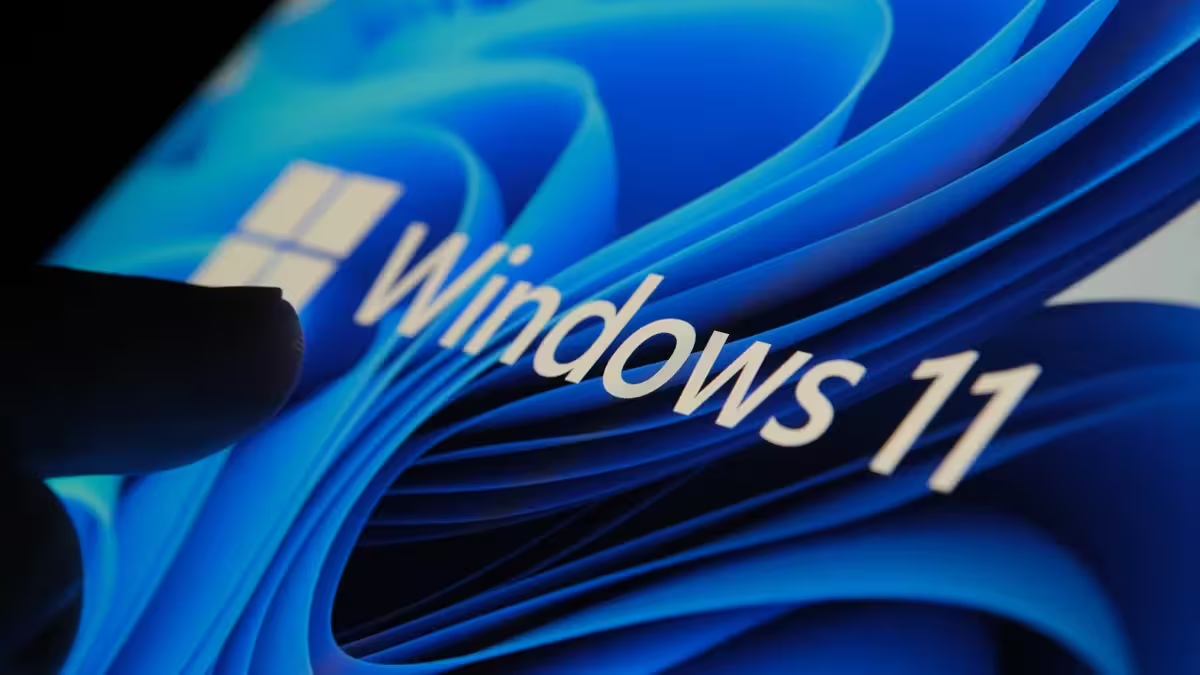9 Minutes
Overview: Why a California Lawsuit Is Grabbing Tech Headlines
Windows 10 reaches End of Life (EOL) in October 2025, and a California resident has filed suit arguing Microsoft is moving too fast. Plaintiff Lawrence Klein alleges Microsoft violated consumer protection and business laws — including claims tied to false advertising — by scheduling the end of security updates and mainstream support for Windows 10 while a large portion of the installed base remains on that operating system. The suit spotlights hardware eligibility for Windows 11, the TPM 2.0 requirement, and a potential surge in electronic waste if users are compelled to buy new machines to remain supported.
What the Lawsuit Says
Plaintiff's Core Claims
Klein asks for injunctive relief to force Microsoft to continue providing free support for Windows 10 until the percentage of devices running it falls below a “reasonable threshold.” He argues that tens or hundreds of millions of devices cannot upgrade to Windows 11 because of Microsoft’s hardware rules — primarily TPM 2.0 and a restricted CPU list — and that this approach could create unnecessary expenditures, security risks for unsupported systems, and a large e‑waste burden.
Legal and Commercial Context
The complaint blends consumer-rights language with business-practice objections. It alleges that Microsoft’s announcement and timing of Windows 10 EOL, combined with marketing pushes for Windows 11 and Copilot-capable PCs, constitute unfair pressure on individuals and organizations to buy new hardware. The suit further contends that Microsoft’s public messaging and in-OS advertising for Copilot+ devices has amplified those concerns.
Five Reasons This Lawsuit Could Make Microsoft Reconsider
Even if the legal outcome is uncertain, the suit raises five practical and reputational pressures that could prompt Microsoft to alter its approach to Windows 10 end of support.
1. Windows 11 hardware requirements are unusually strict
Windows 11 enforces TPM 2.0, Secure Boot, and a specific range of supported processors. While TPM 2.0 improves platform security — enabling hardware-rooted attestation and stronger cryptographic key protection — the requirement excludes many otherwise capable machines. The tight CPU compatibility list has ruled out surprisingly recent chips, producing widespread pushback.
For many IT teams and consumers, the question is one of proportionality: does the security benefit of forcing TPM 2.0 and a narrow CPU list justify accelerating hardware turnover? Critics argue the bar for Windows 11 is higher than previous Windows transitions, potentially leaving hundreds of millions of devices without a path to upgrade.
2. A large share of the installed base still runs Windows 10
Adoption metrics show Windows 10 still commands a significant portion of desktop usage. Estimates vary by source and month: earlier in 2025 some figures pegged Windows 10 at over half of Windows devices, while more recent data from StatCounter suggested about 43% in July 2025. For comparison, Windows 7 had around 25% share at its own EOL.
This scale matters: pulling support while tens or hundreds of millions of endpoints remain on the older OS raises real operational and cybersecurity questions for enterprises, public-sector organizations, and consumers who cannot or will not migrate quickly. The lawsuit argues Microsoft should tie the EOL date to a market threshold rather than an absolute calendar cutoff.
3. Perception of a push toward Copilot+ and AI-focused hardware
Klein suggests Microsoft’s roadmap nudges users toward buying Copilot+ PCs optimized for Windows 11 and AI-driven experiences. Microsoft’s marketing of Windows 11 devices that emphasize Copilot and on-device AI has been visible in various channels — including in-product prompts on Windows 10 machines — which some users see as intrusive upselling.
Whether intentional or not, that perception compounds legal and PR pressure. If the public interprets the EOL policy as primarily benefiting Microsoft’s device and AI ecosystem rather than users, regulators, enterprises, and consumer advocates may escalate scrutiny.

4. Microsoft already made concessions — but critics say they’re insufficient
Microsoft offered extended support options for Windows 10: initially, extended security updates (ESUs) were a paid program for organizations, and Microsoft announced a consumer extension through October 2026 for a modest fee. Following criticism, the company later relaxed that stance by enabling a free path to the extra year of updates for consumers who sync certain PC settings to OneDrive.
That concession reduced some immediate pressure, but it doesn’t address the larger concerns over the hardware eligibility rules and the sheer scale of Windows 10 installations. The lawsuit frames the OneDrive-sync workaround as an incomplete remedy, not a structural solution for those with unsupported hardware.
5. Reputation risk and the optics of e‑waste
Public backlash and media attention amplify reputational risk. The lawsuit has generated headlines and social debate about device obsolescence and electronic waste. Environmental and sustainability groups have flagged mass retirements of otherwise functional laptops and desktops as a policy issue. Microsoft may face both consumer sentiment costs and broader regulatory interest if e‑waste narratives intensify.
That pressure can be persuasive even if legal success for the plaintiff is unlikely: companies sometimes adjust product timelines or add support programs to manage reputational and regulatory exposure.
Technical Deep-Dive: TPM 2.0, CPU lists and the upgrade barrier
Understanding the technical requirements helps evaluate the substance of the lawsuit. TPM 2.0 (Trusted Platform Module version 2.0) provides a hardware security root for device identity, disk encryption keys, and secure attestation. For enterprises with sensitive data, TPM-based features like BitLocker and virtualization-based security are meaningful security improvements.
However, TPM 2.0 is only one part of the Windows 11 compatibility story. Microsoft’s compatibility stance combined CPU microarchitectural requirements (dropping support for some older microarchitectures, even on otherwise capable silicon) and UEFI Secure Boot expectations. The combined effect is that many systems — including some only a few years old — are excluded from direct Windows 11 upgrades.
Comparing Windows 10 and Windows 11: Features, Use Cases, and Fit
Windows 10: Stability, broad hardware support, and enterprise readiness
Windows 10 remains a mature, stable platform with broad compatibility, established enterprise deployment tools, and a predictable lifecycle. Use cases include legacy business applications that depend on older APIs, industrial systems where hardware change is expensive, and budgets that cannot accommodate fleet-wide hardware refreshes. For many organizations, the cost and complexity of migrating devices and validating apps outweigh the feature benefits of moving to Windows 11.
Windows 11: Security and modern UX — at a higher hardware bar
Windows 11 introduces UI refinements, tighter integration with Microsoft 365 and Copilot, and additional security protections that assume modern hardware capabilities. For new devices — especially Copilot+ PCs — Windows 11 may deliver productivity and AI enhancements. Yet the requirement for TPM 2.0 and defined CPU compatibility narrows the eligible device set, affecting market penetration speed.
Product Features and Market Relevance
When analyzing product strategy, consider these elements:
- Security features: TPM 2.0 and virtualization-based security are core differentiators for Windows 11 that map to enterprise compliance requirements.
- AI integration: Copilot and related features are Microsoft’s bet on workstation-level AI assistance; hardware-accelerated AI experiences are positioned as a reason to adopt newer devices.
- Enterprise lifecycle: Organizations evaluate OS lifecycle in procurement and refresh cycles; a forced OS cutoff affects depreciation schedules and asset management.
Market relevance is shaped by how well Microsoft balances security progress with the realities of global hardware distribution, emerging markets, and constrained IT budgets.
Advantages, Trade-offs and Real-World Use Cases
Advantages of sticking with Windows 10 longer
For many users and small businesses, extended Windows 10 support reduces immediate capital expenditure, avoids software compatibility headaches, and allows time to plan hardware refreshes in line with procurement cycles. For organizations running specialized or industrial control systems, longer support minimizes operational disruption.
Advantages of moving to Windows 11
Adopters gain enhanced platform security, modern productivity features, and deeper integration with Microsoft's AI and cloud services. New devices optimized for Windows 11 and Copilot can offer performance and battery improvements along with AI-assisted workflows for knowledge workers.
Policy Alternatives and Practical Recommendations
Both regulators and vendors can pursue intermediate solutions to balance security, sustainability, and customer needs:
- Threshold-based EOL: tie EOL to an adoption threshold (e.g., when Windows 10 usage falls below a specific percentage) rather than a calendar date.
- Extended support tiers: expand free or low-cost extended security updates for consumers and small businesses unable to upgrade hardware immediately.
- Relax certain hardware checks for a transitional period while preserving security options via optional features and guidance.
- Recycling and trade-in programs: scale responsible device refresh programs that minimize e‑waste and offer affordable upgrade paths.
Why the Lawsuit Matters Beyond the Courtroom
Even if Klein's suit does not succeed in court, it reframes the public debate around OS lifecycles, digital sustainability, and corporate responsibility. Microsoft has already adjusted some policies following criticism — the free consumer extension via OneDrive sync being a prominent example. The lawsuit keeps media and public attention focused on the issue, increasing the likelihood of additional concessions, policy dialogues with regulators, or broader industry responses.
Conclusion: A Catalyst for Conversation, Not Just Litigation
The lawsuit crystallizes tensions that have been growing since the Windows 11 announcement: a push for stronger platform security and AI-enabled experiences on one hand, and concerns about compatibility, cost, and environmental impact on the other. For enterprise IT managers, independent developers, and consumers, the core question is about fair transition planning. Should an OS vendor set a hard calendar cutoff, or should major platform transitions be tied to adoption thresholds and practical migration timelines?
Microsoft has signaled some flexibility already, but the legal action and the ensuing public debate may be the nudge that leads to further concessions: longer consumer support options, clearer pathways for legacy hardware, broader recycling programs, or other measures that reduce forced obsolescence. Regardless of the litigation outcome, the conversation is forcing industry stakeholders to consider sustainability and fairness as part of product lifecycle decisions — a positive development for users and the planet.
For technology professionals, product managers, and sustainability advocates, the lesson is clear: platform transitions must be managed in ways that account for security, cost, compatibility, and environmental impact. How Microsoft responds will set precedents for how major software vendors phase out legacy platforms in the era of AI and rapid hardware innovation.
Source: techradar



Comments